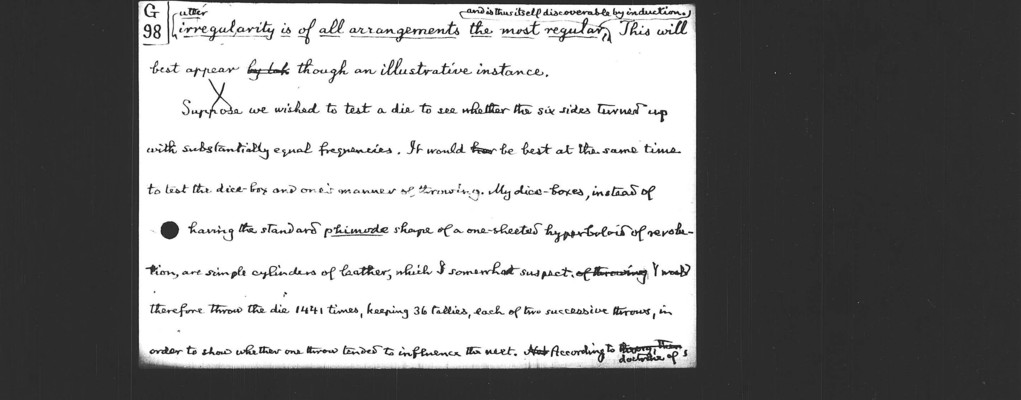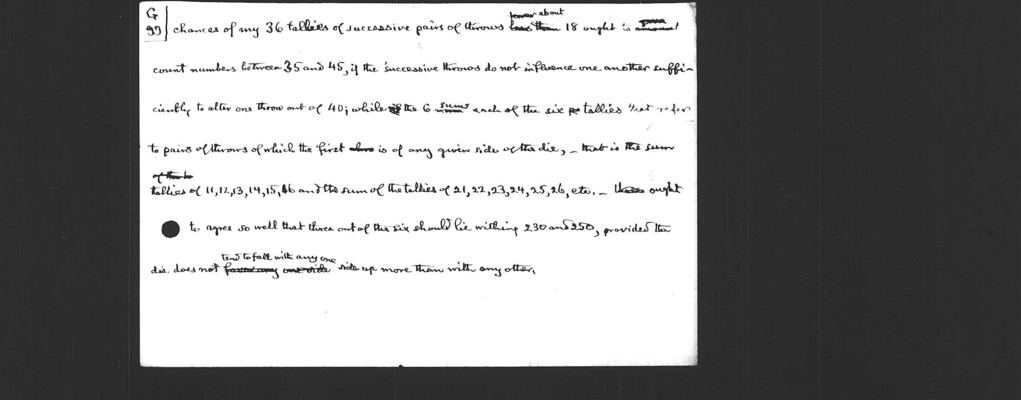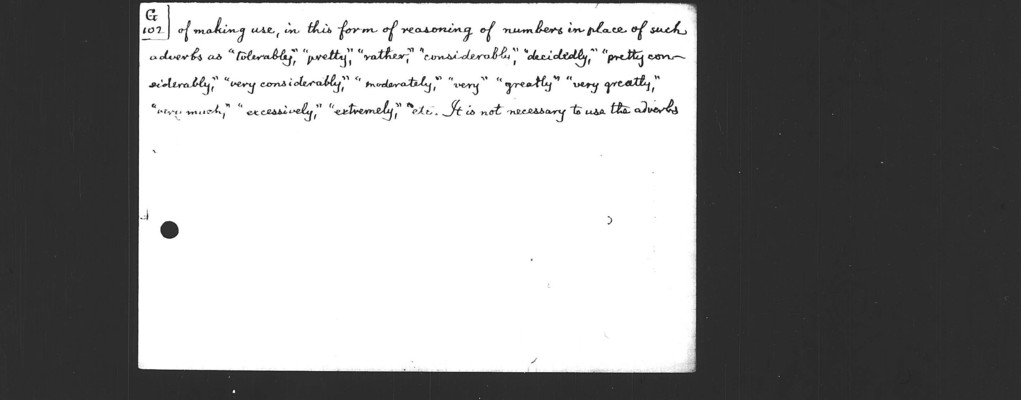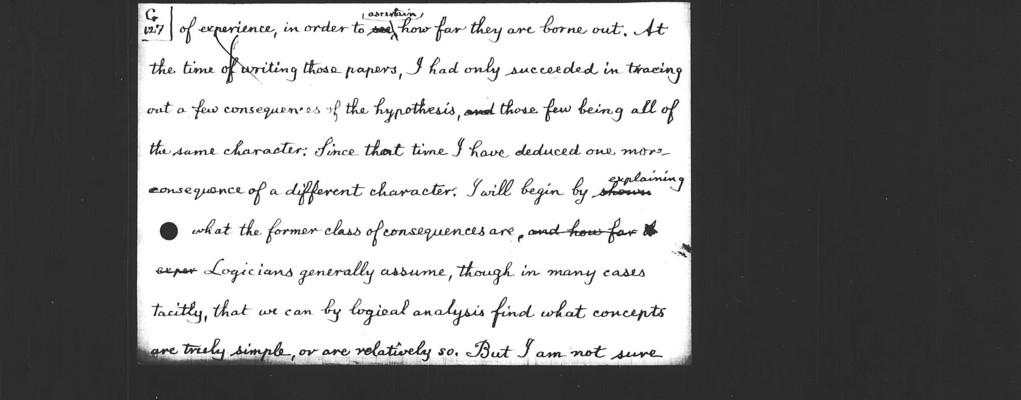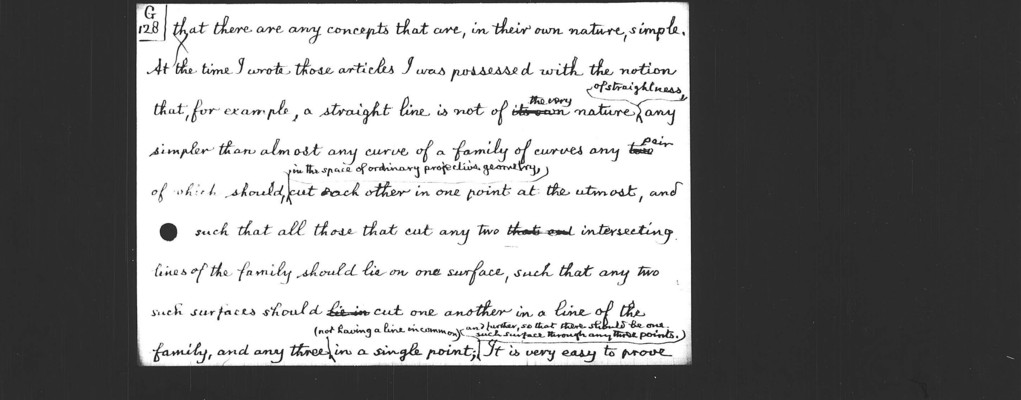Pages
146
G98
utter irregularity is of all arrangements the most regular, and is thus itself discoverable by induction. This will best appear th[r]ough an illustrative instance.
Suppose we wished to test a die to see whether the six sides turned up with substantially equal frequencies. It would be best at the same time to test the dice-box and one's manner of throwing. My dice-boxes, instead of having the standard phimode shape of a one-sided hyperboloid of revolution, are simple cylinders of leather, which I somewhat suspect I would therefore throw the die 1441 times, keeping 36 tallies, each of two successive throws, in order to show whether one throw tended to influence the next. According to [the] doctrine of
147
G99
chances of my 36 tallies of successive pairs of throws about 18 ought to count numbers between 35 and 45, if the successive throws do not influence one another sufficiently to alter one throw out of 40; while the 6 sums each of the six tallies that refer to pairs of throws of which the first is of any given side of the die,—that is the sum tallies of 11, 12, 13, 14, 15, 16 and the sum of the tallies of 21, 22, 23, 24, 25, 26, etc.—ought to agree so well that three out of the six should be within 230 and 250, provided the die does not tend to fall with any one side up more than with any other.
148
G102
of making use, in this form of reasoning of numbers in place of such adverbs as "tolerably," "pretty," "rather," "considerably," "decidedly," "pretty considerably," "very considerably," "moderately," "very" "greatly" "very greatly," "very much," "excessively," "extremely," etc. It is not necessary to use the adverbs
149
G127
of experience, in order to ascertain how far they are borne out. At the time of writing those papers, I had only succeeded in tracing out a few consequences of the hypothesis, those few being all of the same character. Since that time I have deduced one more consequence of a different character. I will begin by explaining what the former class of consequences are. Logicians generally assume, though in many cases tacitly, that we can by logical analysis find what concepts are truly simple, or are relatively so. But I am not sure
150
G128
that there are any concepts that are, in their own nature, simple. At the time I wrote those articles I was possessed with the notion that, for example, a straight line is not of the very nature of straightness, any simpler than almost any curve of a family of curves any pair of which should, in the space of ordinary projective geometry, cut each other in one point at the utmost, and such that all those that cut any two intersecting lines of the family should lie on one surface, such that any two such surfaces should cut one another in a line of the family, and any three (not having a line in common) in a single point; and further, so that there should be one such surface through any [of] those points. It is very easy to prove
